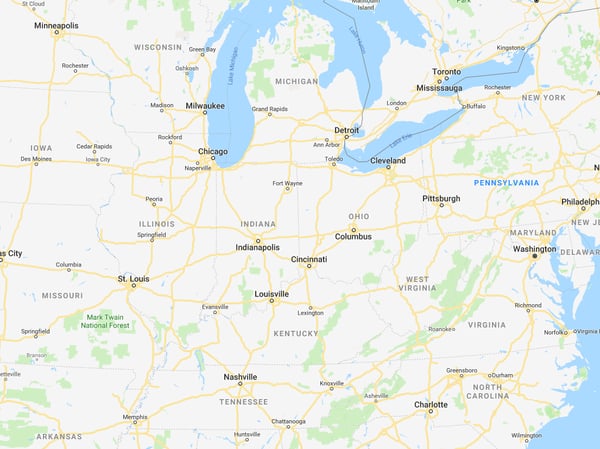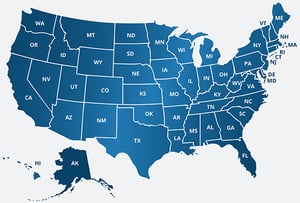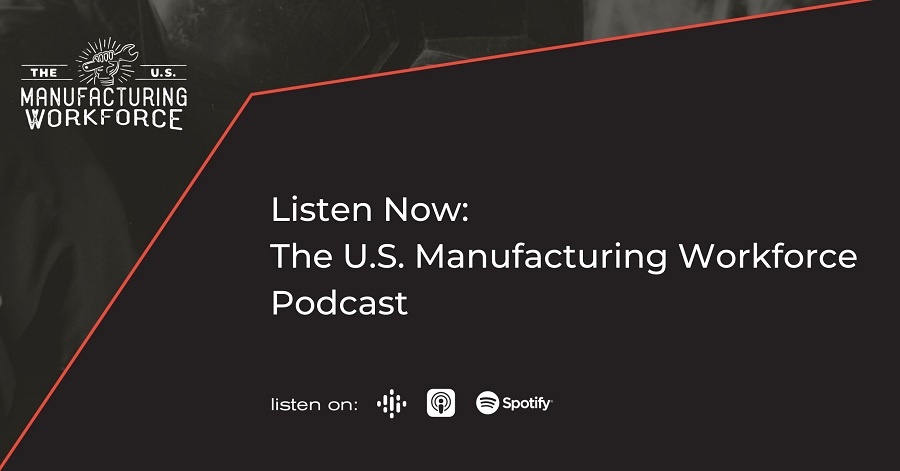Staffing contingency plans are top of mind for manufacturers today due to the tight labor market and a skills shortage that's only expected to get worse. In fact, the U.S. Manufacturing skills gap could leave as many as 2.1 million jobs unfilled by 2030, nearly 78 million manufacturing employees are expected to retire in the United States over the next 10 years, and according to the National Manufacturing Institute, 82% of manufacturing CEO's say the skills gap will affect their ability to service customers.
On top of an industry already struggling with labor challenges, the shift in the labor market from the COVID-19 pandemic that started in March of 2020 and continues in 2022 with the latest variant, Omicron, has left companies scrambling to hire and retain talent. As a result, it's more important than ever, for companies to have contingency plans for staffing shortages, and may even get worse with pending vaccine mandates.
Manufacturers today are finding themselves in situations where traditional staffing models are not cutting it and they're being forced to think outside of the box when it comes to talent. Businesses today need strategic contingency plans to solve personnel shortages when local staffing agencies aren't able to support their evolving needs and contingency plans for supply chain disruptions that continue to impact their operations.
For businesses that have their own production backlogs or those looking to solve their supplier backlogs impacting their operations, companies like MADI that specialize in contingency planning and provide contingency staff solutions specifically for staff shortages. Traditionally, this service has been used during labor disputes -- for when a union workforce goes on strike or is involved in a lockout at their facility -- but as it turns out, this method for sourcing workers nationwide and quickly mobilizing experienced workforces across the country is a PERFECT solution for staff shortages and skills gaps.
Why consider a staffing contingency plan for labor shortages?
Companies have traditionally relied upon regular local staffing agencies to fill in these staffing gaps, but these agencies are experiencing the same hiring challenges as the businesses they're servicing. A lack of available candidates often results in staffing agencies delivering unskilled and under-qualified candidates creating setbacks such as longer training periods, high turnover, and increased costs -- which is not a recipe for achieving operational stability and catching up on production backlogs.

If you were to draw a circle around your plant with a 50-mile radius, how many EXPERIENCED manufacturing workers would there be? Of those, how many would be unemployed or employed and looking for a new job? Much less. The labor market is tight and there are more open jobs than there are people looking for them -and as a result it's creating a war for talent. When your Human Resources and Talent Acquisition teams are putting their hands up in the air because they don't know what else to do to source talent, it's time to reconsider how you're sourcing talent to match the changing labor market and gig economy.
How To Develop A Contingency Plan For Staff Shortages & Skills Gaps
The main components of a business continuity plan typically include a business impact analysis, recovery strategies, plan development, and testing/exercising. This same process can also be applied to workforce planning and contingency plan development for critical staff shortages.
Business Impact Analysis (BIA)
A business impact analysis predicts the consequences of a disruption of a business function and process and gathers information needed to develop recovery strategies. In the case of staffing shortages, consider the impact of:
- Lost sales
- Delayed sales
- Increased expenses such as overtime, outsourcing, expediting costs, etc.
- Fines
- Contractual penalties
- Customer loss
You'll also want to consider timing, duration, operational and financial impacts. When would a worker shortage have the biggest impact on your business -- during your busy season or at the end of a particular month or quarter? This will help you determine when it's time to start considering implementing your staffing contingency plan.
Recovery Strategies
Recovery strategies include alternate means to restore business operations to a minimum acceptable level following disruptions such as machinery breaking down, utility outages, supply chain interruptions, and natural or man-made disasters. In the case of a worker shortage, however, this may include overtime for full-time employees and a mix of traditional staffing agencies or a contingency staffing service.
In the current labor market companies are finding that temporary agencies are having the same trouble finding labor and they're supplying under-qualified workers which increases training time and causes high turnover and increased costs. When traditional staffing agencies aren't delivering the quantity or quality of temporary staffing you need and desire, then bringing in labor from outside the area with the help of a national contingency staffing provider may be required.
What Is Contingency Staffing?
Contingency staffing refers to temporary workers who supplement a company's permanent workforce and usually work under a contract for a fixed period of time on a specific project. This is different from temporary workers who may show up for a few days or weeks. There is also contingency staffing that includes traveling workforces -- where the staffing agency temporarily relocates workers to a project site to help a company fill in large-scale staffing gaps, ramp up during peak seasons, or provide operational stability during times of crisis such as the ongoing pandemic.
Contingency staffing companies are typically used when a company needs to fill open positions quickly. By sourcing their talent nationwide, these companies can respond more quickly, with more workers, and with a more skilled workforce than a traditional staffing agency can.
The pandemic has increased the demand for traveling contingency workforces, so response times have increased and can vary between job categories and industries. It's best to be proactive about reaching out to companies like MADI to find out what their deployment schedule looks like, what the timing would be if you needed their services, and to get on their deployment schedule in advance before your staffing need is more urgent.
For example, turnaround time can vary depending upon skill sets and the number of personnel needed such as skilled CNC Machinists and Welders as opposed to Assembly workers or Machine Operators. Determine what might be a realistic ask for your business needs -- what if you need to add a shift of 100+ assembly workers to your operations or 50 Machine Operators. Download our free staff shortage contingency planner to prioritize your skilled trades and production roles and identify potential staffing gaps.
Then speak with a contingency staffing vendor about your potential needs and the type of support they could provide to your organization if needed moving forward. Some questions to ask and consider include:
- How quickly can a team be on-site after a request is made?
- Who would onboard the temporary workforce?
- How many people can our management team actually intake and train at once?
- Would you need to ramp up the workforce over several weeks?
- Will the temporary staff work on the same shift or across different shifts?
- What are the costs to mobilize a team to my facility or facilities?
Contingency Plan Development
If you're in a position where you're concerned that a staff shortage could have a severe impact on your business, then it's important to put together the right team and gain management approval. If a company has never used contingency/travel labor before it can be a hurdle to get the entire team on board; however, in today's changing labor climate companies must shift their mindset and talent strategies to overcome unpredictable labor shortages, increased customer demand, and skills gaps.
Who Should Be Involved With The Contingency Planning Process?
The main roles that are frequently involved with this type of planning and execution are Human Resources/Talent Acquisition, Operations as well as Executive Leadership such as the CEO, CFO, or COO. The roles can differ from organization to organization and can change with the size of the company.
Small to medium size companies may include human resources, operations, and executives/owners of the business. For enterprise companies, regional and/or corporate human resources and operations may be involved as well as the key leadership from the facility that is in need of temporary staff.
As a rule of thumb, you'll want to include critical stakeholders that will be working directly with the temporary staff and overseeing the project. Everyone involved should be on the same page with regard to expectations, timelines, and project management to ensure overall success.
Testing & Exercises
A critical component of any staffing contingency plan is testing and exercises of the plan. If your organization is skeptical about using a contingency staffing vendor or concerned that the level of talent provided will be no different from what's being provided by local staffing agencies then the best thing to do is test the service by bringing in a small group of workers.
Maybe you anticipate increased customer demand next year, but have a small need at a facility now -- test it and bring in a small group in now. Or maybe you have an urgent need for support at multiple sites -- you could and should start by deploying personnel to one site first to prove proof of concept.
By working with the service provider you'll learn how everything works from employee selection, and onboarding to project management and billing. If your potential need is 100 temporary workers, for example, start with a small group of 15 or 20 people, and if all is going well ramp up by adding groups of 20 until you reach your desired staffing level.
Why Use Contingency Staff Over Traditional Staffing?
A key difference between a contingency staffing agency that relocates workers to your plant and a staffing agency providing temporary staff from the local market is the contingency planning expertise and project management. With executive management oversight and field supervision to coordinate logistics, onboarding, and ensure the workforce arrives as a group on time each day prior to their scheduled shift -- the efficiency, reliability, and productivity are unmatched.
Another critical difference between traditional staffing agencies and contingency staffing agencies such as MADI is the size of the labor pool. Sourcing candidates from across the entire United States opens up the available resource pool for access to larger groups of workers, more skilled candidates, and enables rapid deployment of workforces for urgent staffing situations.
Imagine being able to hire EXPERIENCED manufacturing workers from a national talent pool without the restriction of a 50-mile radius around your plant. Imagine being able to have 50, 100, or 200+ EXPERIENCED production and skilled trades workers on-site within two weeks, regardless of your location. This is much faster than the average time to fill skilled production worker positions these days, which is 93 days, according to the 2018 Deloitte and The Manufacturing Institute Skills Gap and Future of Work Study.
Why Access Talent From A National Labor Pool
 Adjusting the size of your labor pool alone can solve large-scale staffing challenges for companies in need of hundreds of workers quickly. This also provides an effective temporary solution for skill gaps when there is a lack of skilled trades and technicians within a particular region.
Adjusting the size of your labor pool alone can solve large-scale staffing challenges for companies in need of hundreds of workers quickly. This also provides an effective temporary solution for skill gaps when there is a lack of skilled trades and technicians within a particular region.
Rather than leaving production lines down or critical positions unfilled such as CNC Machinists, Welders, and Maintenance Techs, more companies are turning to contingency staff because they're able to hire experienced workers that can step right into their operations, acclimate quickly, and ramp up production efficiently.
Quickly Ramp Up Manufacturing Operations
Even Fortune 500 companies offering great pay and benefits are having trouble filling their factories with full-time employees these days. Add to that, a situation where there is an unexpected spike in demand, how can a company ramp up manufacturing? Finding hundreds of workers locally to add another shift to their operations is nearly impossible, never mind doing so quickly.
This is where contingency plan development and a contingency staffing vendor to help become critical -- because it's a controlled mobilization, an efficient onboarding process, and continued hands-on project management throughout the project to ensure operational stability.
Workforce Agility
In today's rapidly changing business environment and talent market, it's more important than ever for businesses to remain agile and that goes well beyond technology delivery. We're in a new phase of workforce innovation right now and with increased competition, shrinking product life cycles, and evolving customer interests, so companies must be able to alter their direction and adjust quickly.
In today's labor market, forward-thinking companies are shifting their mindset on talent, considering different staffing strategies, preparing staff contingency plans, and deploying workforces to their facilities across the country in order to maintain their competitive advantage.
Finding Skilled Welders From All Over The United States
In the video above, Tanya, HR Manager at TCF, describes her experience and the ROI of working with MADI to deliver experienced Welders to her facilities from across the country.

FAQ
Traditional staffing methods are not enough for modern companies whose needs are constantly changing. In such unexpected circumstances as the COVID-19 pandemic, companies need alternative methods and strategies for sourcing labor to keep operations running. In today’s competitive market, they can’t afford their brand to be harmed by any backlogs.
Apart from such situations as a pandemic, contingency staffing can help your business during, for example, busy seasons, times of low unemployment, after-disaster time, or when unexpected customer orders come in. Basically, it can help you in any labor shortage or skills gap issue as it provides you with qualified temporary workers right away.
BIA stands for a business impact analysis, and it helps to determine what consequences a particular business function’s disruption may cause. Furthermore, it involves collecting all the data necessary for creating efficient recovery strategies. Such factors as, for instance, lost and delayed sales, contractual penalties, and customer losses.
Recovery strategies are the methods that should be used to restore your business operations to at least a minimum satisfactory level in critical situations. They are crucial in labor shortages, natural or human-made disasters, utility outages, and many other difficult circumstances.
It may happen that a company is not convinced about the idea of using contingency staffing services. In such a case, it’s beneficial to test our services with a small group of personnel first. Namely, you don’t have to request a huge number of temporary workers from the start. Instead, we can bring you just a small group and show it to you that they can work effectively.
One of our biggest advantages is that we have access to a national talent pool. Our workers don’t have any problems with traveling to any location within the United States, so we can easily find a workforce with any qualifications you need, usually within two weeks.
The present business environment is evolving very quickly, so it is more significant than ever before for companies to stay agile. With so many competitors on the market and with the constantly appearing innovations, it is essential to be able to adapt to changes. Thanks to contingency staffing services, you will be able to adjust to any circumstances and avoid huge financial losses in the case of some unexpected difficulties.









Comments
Currently, there are no comments. Be the first to post one!